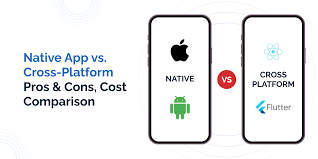London’s AI scene is moving fast. Businesses here aren’t just talking about AI—they’re using it to change how they work, make decisions, and connect with customers. From finance to healthcare, real estate to logistics, everyone’s looking for new ways to automate tasks, get smarter insights, and deliver better experiences. With the right AI development partner in London, companies can actually make sense of their data and build systems that really make a difference.
The competition’s only getting tougher. If you want to stay in the game in 2025, finding a skilled AI developer in London isn’t just a nice-to-have—it’s a must. That’s why the city’s quickly turned into a hotspot for AI solutions that actually work, scale, and keep you ready for whatever’s next.
Why AI Matters So Much in 2025
London’s business world never stands still. The companies that jump into AI early are the ones pulling ahead—they work smarter, move faster, and make sharper calls.
Customers? They expect you to know what they want before they even ask. AI lets you predict behavior, tailor experiences, and respond in real time.
Manual work is fading out. In every industry, automation slashes errors, saves hours, and frees up your team for bigger challenges.
Innovation cycles get shorter every year. AI means you can prototype quickly, forecast more accurately, and build smarter products without missing a beat.
What a London AI Development Company Actually Does
A good AI partner in London knows the tech and speaks your industry’s language. Here’s what you get:
Custom AI Solutions
Every business has its quirks—maybe you need fraud detection, maybe you want to analyze customer sentiment, maybe it’s smarter chatbots. Custom AI gets you models that actually fit your needs and goals.
Data Processing and Engineering
Let’s be real: raw data is a mess. AI teams organize, clean, and prep it, so your machine learning models have a solid base to work from.
Predictive Analytics
Want to make smarter bets on where the market’s going? Plan sales, manage inventory, or understand your customers? Predictive analytics is now essential.
AI-Powered Automation
From cranking out reports to streamlining workflows, AI-driven automation cuts costs and helps your team focus on the work that actually matters.
Integration with What You Already Use
You’re not starting from scratch. AI developers in London know how to fit new systems into your existing stack—CRMs, ERPs, cloud tools, you name it.
Key AI Development Services London Offers for 2025
Machine Learning Model Development
Build models that actually learn from your data and get better over time.
Natural Language Processing (NLP)
Power up your chatbots, customer support, and content tools with AI that understands language.
Computer Vision
From security to product recognition and retail analytics, see more in your data.
AI-Driven Business Intelligence
Turn raw information into clear, actionable insights for your leadership team.
Process Automation
Automate those repetitive business chores—faster, fewer mistakes, more time for real work.
Industries in London Seeing the Biggest Gains from AI in 2025
Finance & FinTech
AI cracks down on fraud, powers trading algorithms, and keeps you compliant.
Healthcare
Smarter diagnoses, automated scheduling, and deeper patient insights are now the norm.
Retail & E-Commerce
AI delivers personalized shopping, sharpens inventory forecasts, and builds smoother supply chains.
Real Estate
Smarter property valuations, data-driven investment decisions, and better customer management.
Logistics & Transportation
AI optimizes routes, manages fleets, and provides real-time analytics.
How to Choose the Right AI Developer in London
You want a partner who:
Knows how to build big, enterprise-level AI solutions
Takes data privacy and compliance seriously
Can build models that fit your business—not just off-the-shelf stuff
Has real cloud and integration chops
Keeps you in the loop throughout development
Offers solutions that grow with your business
The right AI company in London makes rolling out new tech smooth—and sets you up for real long-term wins.
Looking Ahead: The Future for AI in London
By 2025, London’s not just a tech city—it’s a global AI leader. More businesses are moving from small pilot programs to full-on AI-powered operations that change how they work, for real.
Soon, using AI won’t just be a bonus. It’ll be the baseline. The companies that start now are the ones leading digital transformation, not scrambling to catch up.
Bottom line?
AI development services in London help enterprises work smarter, move faster, and innovate with real confidence. Whether it’s automation, analytics, or building intelligent apps, the right AI partner helps you tackle 2025 clear-eyed and ready. If you want to stay ahead, now’s the time to make AI part of your core strategy—not just an upgrade, but a whole new way forward.




